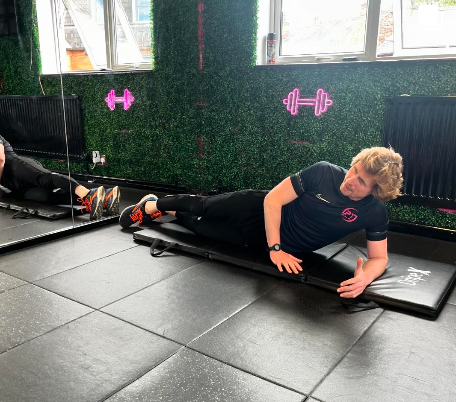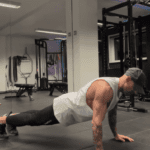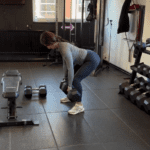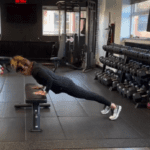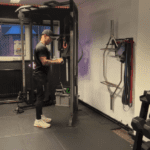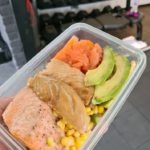Bodyweight training, also known as calisthenics, is a form of exercise that uses an individuals own body weight as resistance to build strength, endurance and flexibility. It involves various activities such as push-ups, squats, lunges, dips and planks without the use of weights or machines. Some key points about bodyweight training:
- It has been practiced for centuries, with origins back to ancient Greece.
- It is a convenient and affordable way to exercise as it requires little to no equipment and can be done anywhere.
- Bodyweight exercises can enhance a range of physical abilities including strength, power, endurance, flexibility, coordination and balance.
- Compared to weight training, bodyweight training develops ‘relative strength’ – the ability to move one’s own body weight, rather than absolute strength to lift external loads. This can lead to an increase in strength and muscle mass.
- Bodyweight training can be effective for building muscle, as long as the exercises provide enough repetition and time under tension to challenge these muscles.
- It is suitable for people of all fitness levels as the exercises can be modified to increase or decrease difficulty.
- Bodyweight training enhances cardiovascular fitness as workouts often involve high-intensity interval training (HIIT) which can improve cardiovascular endurance and aerobic capacity.
- Bodyweight training is particularly beneficial for older adults, helping to improve mobility, balance, and prevent falls.
Personal training can provide significant benefits over training alone, especially for bodyweight training. A study found that a personal training group gained nearly twice as much strength, lost twice as much body fat, and increased aerobic fitness 8x more than a self-directed group over 12 weeks – the personal training group also achieved these results whilst exercising 15% less time per week!
Whilst bodyweight training can be effective, it requires proper programming and progression to maximise results. Bodyweight exercises can be made extremely challenging through techniques like high volume training, metabolic stress and skill work. However, we must state that you should err on the side of caution when bodyweight training alone as it may have limitations in building maximal strength compared to weight training. The guidance and programming from a personal trainer is crucial for optimising the effectiveness of bodyweight training.
Some examples of common and effective bodyweight exercises are:
- Push-ups: Work the chest, shoulders and triceps by pushing your body up and down.
- Squats: Target the legs, glutes and core by bending at the hips and knees to lower your body.
- Planks: Engage the core muscles by holding a push-up position with your forearms on the ground.
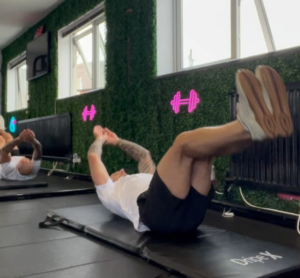
- Mountain climbers: Work the core, shoulders and legs by alternating bringing your knees toward your chest in a plank position.
- Burpees: Combine a squat, plank and jump to work the full body in an explosive movement.
- Single-leg deadlifts: Challenge balance and work the hamstrings and glutes by lifting one leg back as you hinge forward.
- Crunches: Target the abdominal muscles by lifting your shoulder blades off the ground while keeping your legs bent.
- Dips: Use a chair or bench to lower and raise your body, working the triceps and chest.
- Pull-ups: Grip a bar and pull your body up, engaging the back, biceps and core.
- Bodyweight rows: Use a table or sturdy surface to row your body towards your hands, working the back.
This variety of exercises allows you to target all of the major muscle groups just by using your own bodyweight as resistance.
Key recommendations for how often bodyweight training should be incorporated into a workout routine:
- Maintain similar training frequency as before – this helps your body adapt to the new stimulus without overtraining.
- Aim for 2-3 full body bodyweight workouts per week – this allows for adequate recovery between sessions.
- Adjust frequency based on intensity and adaption – if the bodyweight workouts feel easy, you can increase the frequency by adding an extra session. On the flip side, if you experience excessive soreness or fatigue, decrease the frequency.
- Consider training status – if you were previously training at a high intensity, maintaining a higher frequency (e.g. 3-4 sessions per week) can help avoid detraining when transitioning to bodyweight training.
- Periodise and track volume/intensity – creating a structured bodyweight training program and tracking metrics like time under tension, velocity and total volume can help determine the optimal training frequency for continued progress.
Around 2-3 full bodyweight training sessions per week is a good starting point, with flexibility to adjust the frequency up or down based on individual recovery and adaption. Maintaining a similar training frequency as before is also recommended.
Bodyweight training is a versatile and practical form of exercise that uses your own body weight as resistance, providing a convenient and effective way to build strength, endurance, and flexibility. Bodyweight training offers a well-rounded approach to improving overall fitness through gains in strength, cardiovascular health, flexibility and accessibility – without the need for specialised equipment.
A Personal Trainer is an investment in your health and well-being that can lead to long-term positive effects on your fitness, confidence, and overall health. PT Hale prides itself on being a social and safe space where you can work out individually, or with like-minded people to get the results that you want and deserve – LET’S GO!

